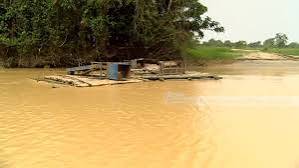Safeguarding Our Rivers: Combatting Pollution from Illegal Mining
As illegal mining continues to wreak havoc on river ecosystems, the urgent need to monitor and protect river basins has never been more critical. Pollutants from unregulated mining activities have severely impacted water quality, threatening aquatic life and human health. In response, various stakeholders are ramping up efforts to address these pressing concerns, yet significant challenges remain in achieving restoration goals by 2025.
Illegal mining operations often disregard environmental regulations, leading to the widespread release of toxic substances like heavy metals and sediment into rivers. These pollutants disrupt the natural balance of ecosystems, harming fish populations and diminishing biodiversity. Moreover, communities relying on these water sources for drinking, agriculture, and recreation face increasing health risks, including waterborne diseases and exposure to harmful chemicals.
Recognizing the severity of this issue, governments, non-governmental organizations, and local communities have begun to implement monitoring programs aimed at assessing and mitigating pollution. Innovative technologies, such as remote sensing and water quality sensors, are being employed to gather real-time data on river health. This data is crucial for identifying pollution sources and enabling timely interventions.
In addition to monitoring, various restoration initiatives are underway to rehabilitate affected river basins. These efforts include reforestation projects to stabilize riverbanks, the installation of silt traps to reduce sedimentation, and community education programs promoting sustainable practices. However, these initiatives face hurdles, such as limited funding, lack of enforcement of environmental regulations, and the challenge of engaging local communities that may rely on mining for their livelihoods.
Furthermore, the illegal nature of these mining operations complicates enforcement efforts. Corruption and inadequate resources often hinder authorities from taking decisive action against offenders. To combat this, collaboration between government agencies, environmental organizations, and local communities is essential. By fostering partnerships and enhancing transparency, stakeholders can create a more unified front against illegal mining and its detrimental effects on river quality.
In conclusion, while significant strides are being made to monitor and protect river basins from pollution caused by illegal mining, substantial challenges remain. Achieving restoration goals by 2025 requires a concerted effort to enhance enforcement, secure funding, and engage communities in sustainable practices. Only through collaborative action can we hope to safeguard our rivers for future generations.


